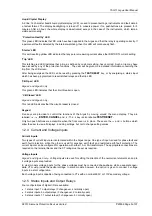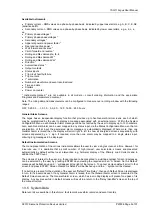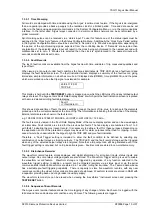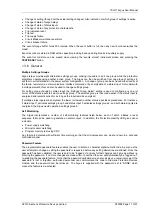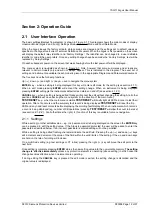
7SG11 Argus User Manual
©2013 Siemens Protection Devices Limited
P20006 Page 18 of 37
Section 4: Commissioning
4.1 Before Testing
4.1.1 Test Equipment
500V Insulation resistance test set.
1. Secondary injection current source rated 10A or greater
2. Time interval meter
3. Primary injection equipment
4. A d.c. supply with nominal voltage within the working range of the Argus d.c. auxiliary supply rating
5. A d.c. supply with nominal voltage within the working range of the Argus d.c. status input rating
Additionally for Argus 2 and 6 relays, the following equipment is required
Variable voltage source
6. Phase shifting transformer
7. Phase Sequence Indicator
Alternatively, items 1, 2, 4, 5, 6 and 7 can be replaced by a computer programmable V & I source universal test
set
Additional equipment for general tests and for testing the communications channel:-
Portable PC with an RS232 to fibre-optic converter and suitable interface cable or via RS485 input. Printer to
operate from the above PC (Optional).
Use of PC to Facilitate Testing
The functions of Reydisp Evolution (see section 2.2) can be used during the commissioning tests to assist with
test procedures or to provide documentation recording the test and test parameters. One method is to clear both
the waveform and event records before each test is started, then, after the tests, upload from the Argus the
settings, events and waveform files generated as a result of application of the tests. These can then be saved off
to retain a comprehensive record of all tests. This method is particularly useful when auto-reclose sequences are
being checked.
When testing is completed then the event and waveform records should be cleared and the settings file checked
to ensure that the required in-service settings are being applied.
4.1.2 Precautions
Before electrical testing commences the equipment should be isolated from the current transformers and the CTs
should be short-circuited in line with the local site procedures. The tripping and alarm circuits should also be
isolated where practical. The provision and use of secondary injection test sockets on the panel simplifies the test
procedure.
Ensure that the correct d.c. auxiliary supply voltage and polarity is applied. See the relevant scheme diagrams for
the relay connections.
Check that the nominal secondary current rating of the current transformers has been correctly set on the P/F
Rating, E/F Rating and SEF Rating settings in the System Config. menu of the relay.
4.1.3 Applying Settings
The settings for the particular application should be applied before any secondary testing occurs. If they are not
available then the Argus has default settings that can be used for pre-commissioning tests. Refer to the
appropriate Diagrams and Parameters document for the default settings. Note that the tripping and alarm contacts
must be programmed correctly before any scheme tests are carried out.
Argus relays feature eight alternative settings groups. In applications where more than one settings group is to be
used then it may be necessary to test the Argus in more than one configuration.
Note.
One group may be used as a ‘Test’ group to hold test-only settings that can be used for regular
maintenance testing, eliminating the need for the Test Engineer to interfere with the actual in-service settings in
the normally active group. This Test group may also be used for functional testing where it is necessary to disable
or change settings to facilitate testing.


